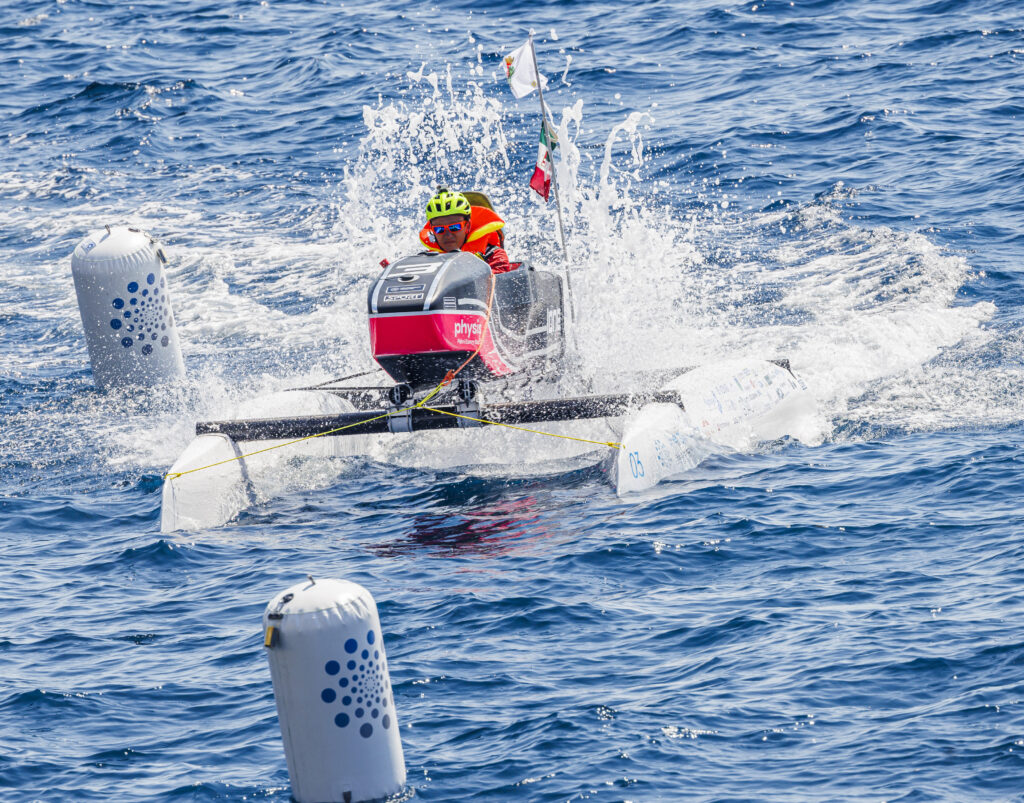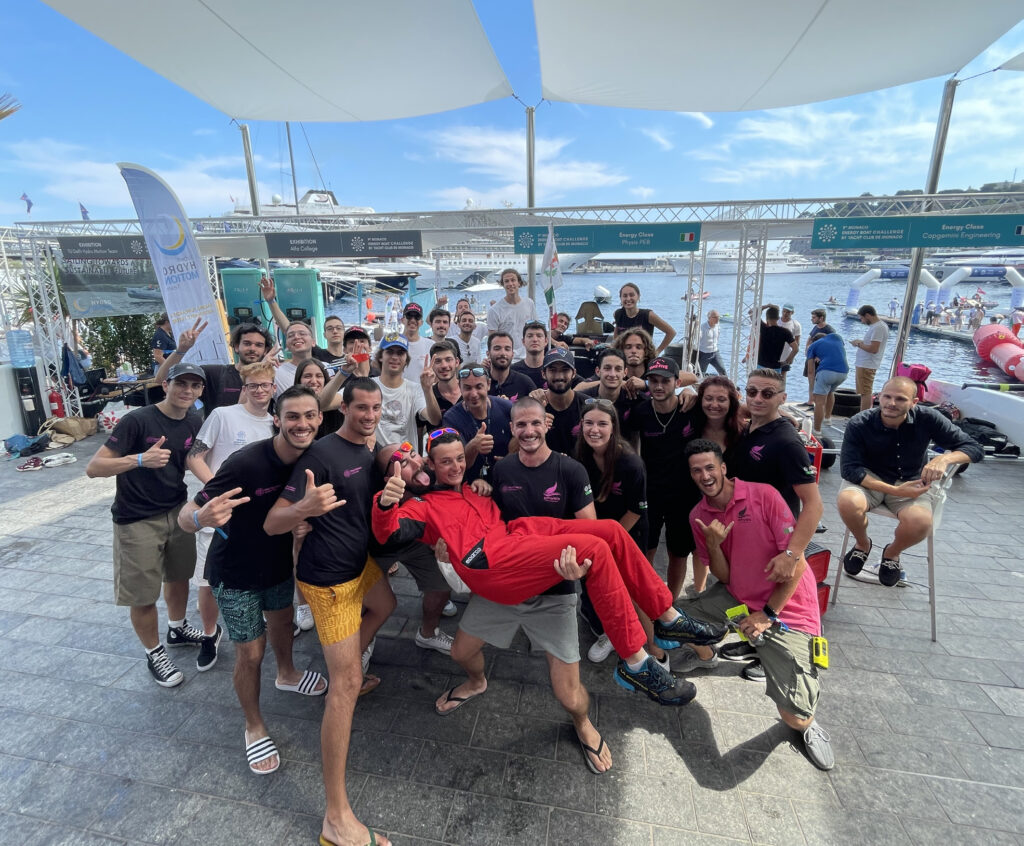‘IONE 1.0 was ranked 3rd in the Energy Boat Challenge. Love, hunger and a little madness are the ingredients that made what was just a dream come true, the same ingredients that keep us dreaming of embarking on ever bigger waves’.
On 10 July 2022, on Physis PEB 's social networks , we read this post published the day after the Monaco Energy Boat Challenge, where in addition to third place for the energy class, the team and students of the Politecnico di Milano also won theEco Conception Prize for the sustainability of the idea. Making this milestone even more important is the fact that the Monaco Energy Boat Challenge is a unique event in the world, dedicated precisely to innovation and sustainability for boating; now in its ninth edition, it involved twenty-seven universities from all over the world, ‘a bridge between tomorrow's engineers and today's industry leaders’, declare the organizers.

The starting point of this goal is told by Alumnus and teacher Paolo Schito from the Department of Mechanics: ‘Initially we were invited, as Politecnico di Milano, to participate in this competition by the Yacht Club de Monaco. In July 2021 we decided to involve students by selecting eight out of sixty candidates. We looked for people who had skills outside the purely academic field, also linked to their own passion. From late September to mid-November, the first eight participants developed the concept of the boat, then recruited other students. The team currently consists of about eighty people’.
Camilla Salvagno, in her third year of Mechanical Engineering, is among the first eight people recruited. Today she is Team Leader of the project and goes into the details:
‘We build a hybrid catamaran with an electric motor, with three energy sources: battery, solar panels and hydrogen. We work on the cockpit, on the propulsion system and on the energy system and we design all the structures and electronics. The propulsion system is based on an electric outboard from the sponsor company Gardasolar. Starting from the characterization of the engine, propellers optimized for the race working points were integrated to ensure maximum thrust and maximum efficiency.
The carbon cockpit mould, i.e. the cockpit of the boat, is recycled from that of the SAE formula, another Poli team. The cockpit was then laminated in prototype basalt fibre, recycled PET sandwich and BioBased resin. The peculiarity of this resin is that, through an innovative process, it allows the fibres used for lamination to be re-extracted at room temperature without affecting their mechanical performance, so that they can be reused again. The structure of the solar panels, on the other hand, is made of bamboo with joints designed and moulded by us in the laboratory in recyclable PLA and reinforced with punctured bicycle inner tubes‘.

Preparing for a competition like this means leaving the classroom and literally embarking on a project to be navigated, arriving at new lands such as those of the search for sponsors, venturing and interfacing with a still unknown world which is that of work and that of theory applied to making a boat that must stay afloat.
Schito, on the other hand, explains what is the value for the University:
‘The Poli has expertise in the nautical sectors, hydrogen propulsion, electric motors and attention to CO2 emissions. With Physis PEB all the laboratories involved in the initiative have the opportunity to see their research applied’.
